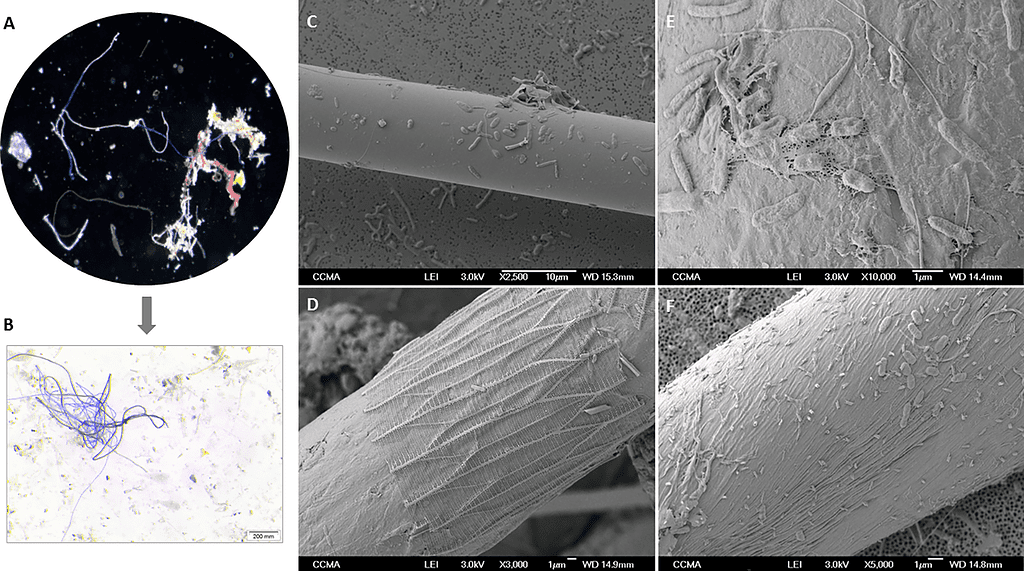Microfibers from plastic pollution, the textile industry and fishing activity have gradually accumulated in the seas and oceans — but their effects on health remain poorly understood. Now, researchers have shown that these fibers can become a reservoir of pathogens, with almost 200 species of bacteria that have taken over the synthetic and natural filaments. This increases the risk of contamination, compared to natural particles, where bacteria also live.

Microfiber pollution is widespread in coastal and offshore surface waters in all ocean basins. Whether synthetic or natural polymers, these particles can become an emerging pollution concern because organisms are exposed to this mixture on a daily basis. However, little is known about the degradation of microfibers and their long-term risk to ecosystems and human health.
Once at the sea, like other microplastics, the fibrous material can be rapidly colonized by microorganisms, such as bacteria or microalgae. The establishment of microfilm on microplastics, which appears and smells like food, may enhance their ingestion. Plastics can become vectors for potentially dangerous or pathogenic microorganisms, with many studies looking into their impact.
Maria Luiza Pedrotti of Sorbonne Université aimed to investigate the role of floating microfibers in harboring microorganisms in the Mediterranean Sea. This sea, although it represents 0.8% of the world’s marine waters, accounts for about 7% of microplastic pollution in the global ocean. It hosts a high level of biodiversity, with 17,000 species – 28% endemic and affected by plastic pollution.
Bacteria and microfiber pollution
The researchers collected samples from the sea surface aboard the research vessel “The Alchemy,” a sailing ship in the northwestern Mediterranean Sea. The samples were then analyzed in the Laboratory of Oceanography of Villefranche-sur-mer of Sorbonne University. The researchers combined molecular analysis and Scanning Electron Microscopy (SEM) to analyse the samples.
“We described around 200 species of bacteria attached to floating microfibers in the Mediterranean Sea, including synthetic fibers, and among these species, we found some potential human and animal pathogens, such as Vibrio parahaemolyticus (a bacterium linked to stomach diseases),” Pedrotti told ZME. “We observed a mean concentration of 2663 of bacteria per microfiber.”
This is the first study to report the presence of Vibrio parahaemolyticus on microfibers in the Mediterranean Sea. Identifying these microfiber colonizers offers valuable insight to assess health risks, as their presence can be a threat to seafood consumption, the researchers said. The bacteria could also be influenced by climate change, they said, as higher temperatures increase their spread.
Based on the results of the diversity of bacteria living on microplastics, the researchers hope to go further in other types of analysis to investigate how these bacteria express their virulence and how it is influenced by environmental conditions in the ocean, especially the temperature. The Mediterranean Sea is warming faster than other oceanic regions in the world, they explained.
“The Mediterranean is under constant anthropogenic pressure regarding pollution, as well as the consequences of climate change exceeding global trends for most variables, with waters warming faster than the rest of the ocean, especially during the summer months,” they wrote in the paper. “These changing conditions can lead to shifts in marine microbial community structure.”
The study was published in the journal PLOS ONE.


